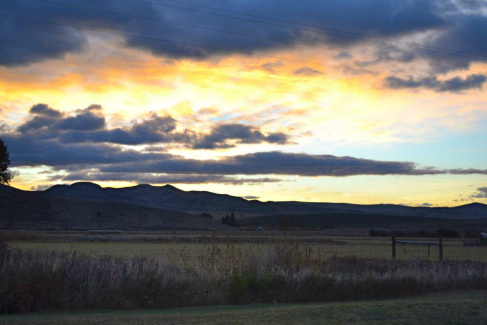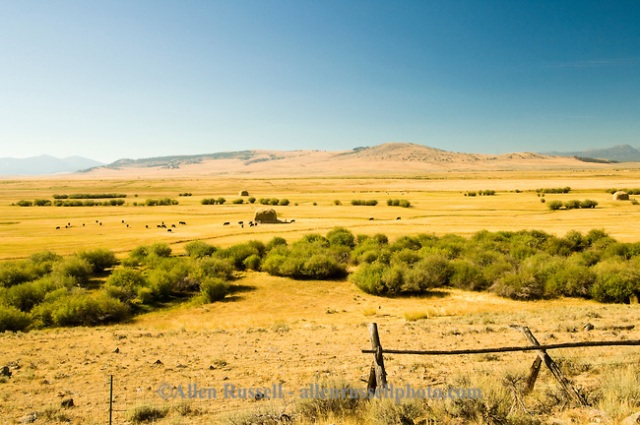
Sloughing in the Big Hole River Valley my first rainbow trout from the Big Hole

Sloughing in the Big Hole River Valley my first rainbow trout from the Big Hole

Ben with Big Hole River brown trout

Burke with upper Red Rocks westslope cutthroat trout 2014

Brad with big Clark Canyon Reservoir common carp

Monte Dolack (C)
Emily Cayer
“Collaboratioin is the only way to work on private lands. Regulation is a heavy stick. Nobody likes being chased around by someone with a heavy stick…”

Cynthia Baldauf (C)
Elk crossing in the Big Hole Valley

This photo was taken during a crisp fall evening in the lower Big Hole valley.
“We collaborate with Region 3 Fish, Wildlife and Parks (FWP) a lot with the Big Hole River Arctic Grayling issue, but since it’s out of our jurisdiction Missoula FWP does not help with the tests done on the Big Hole River.”- Ron Pierce (Missoula FWP Fisheries Biologist)
Jim Hagenbarth is a rancher outside of Glen Montana, is the Vice-Chairman of the Big Hole Watershed Committee, and one of the committee’s five founders. I interviewed Mr. Hagenbarth about the area that his family homesteaded in the 1870’s and how he feels about it’s current state.
Mr. Hagenbarth and other people in the Big Hole first noticed issues with the water supply before 1965; during this time people “started to come out and exercise interest in what was believed to be their right with the public land” such as fishing and other outdoor recreation. This resulted in the residents being asked to accommodate the new people to the area which resulted in a drought plan. The drought plan is comprised of different trigger levels that when reached different measures are taken to maintain flow throughout the river. Then in the mid-1990’s the river had extreme low flow, Mr. Hagenbarth along with four other ranchers put together a task force to spread awareness and try to find ways to overcome this issues. This task force broadened out for all interests and is called the Big Hole Watershed Committee.
I asked Mr. Hagenbarth about the current water usage and his take is that “water usage has not changed much besides mother nature.” Currently ranches and farms like Mr. Hagenbarth’s that were some of the first to use the water get the water that they need for sustainability. Mr. Hagenbarth also said that when the river gets low; he and others have just learned to adjust, they also when needed send their reserve water supply back to the river so it can maintain flow. Mr. Hagenbarth stressed for the future that the promotion of irrigation is key for the watershed because of the return flows and that the area is in a cycle between snow and irrigation. Furthermore Mr. Hagenbarth believes that there should be further research in storage projects; this would mean that when the river is low the stored water could be pumped back into the river.
When asked about Arctic Grayling, Mr. Hagenbarth said that there have been great strides taken by people living in the area to protect the fish. He did say that some causes for the decrease in numbers is that competitors of the fish have been planted in the river and that “nature is nature” meaning the bigger and stronger fish will survive. Mr. Hagenbarth also expressed his concern that some people trying to protect the fish are using it as a weapon to change other habitats that do not need to be changed. Overall Mr. Hagenbarth said that the “key is to slow down the water and use it over and over again.”
“Interview of Jim Hagenbarth.” Telephone interview. 15 Apr. 2014.
Russell, Allen. Angus Cattle, Big Hole Valley, Land of 10,000 Haystacks, SW Montana. Digital image. Life in the American West. Allen Russell, 2007. Web. 5 May 2014.
I talked to the Big Hole Valley Fisheries Biologist for FWP, Jim Olsen. Among other things, his main point to me was that the collaboration and habitat restoration efforts are at a 25 year high. He said that the worst thing that could happen for the Big Hole River is for Arctic Grayling to be put on the Endangered Species List in September 2014. “There is nothing more we could do” said Jim, referring to if Arctic Grayling were put on the Endangered Species List.
-Trevor